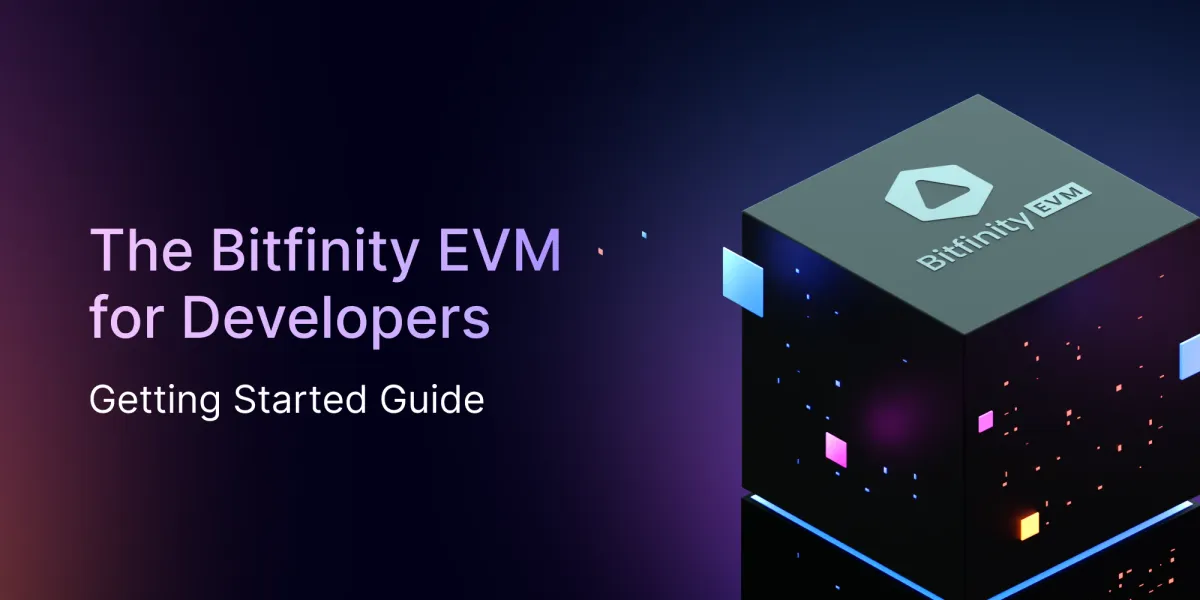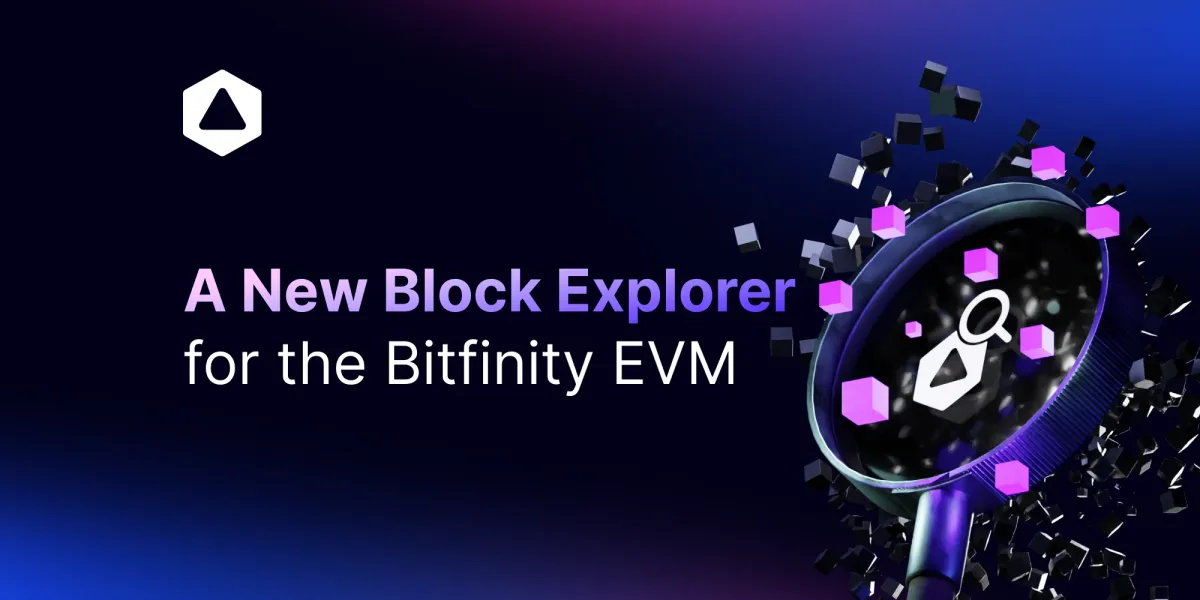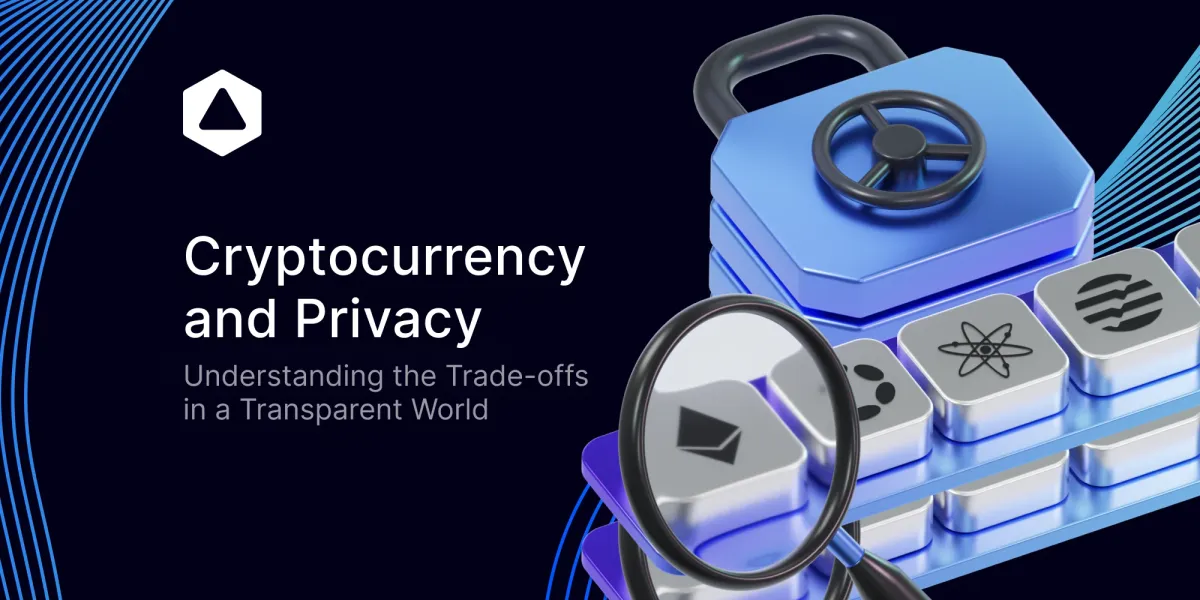Explorers in Crypto and Your Bitfinity EVM Map and Compass

One of blockchain's most tangible, yet subtle, characteristics is its readability. The ability to easily read from the chain is the most primitive form of blockchain verification and nothing short of impressive when we consider how complex smart contract logic can be. Therefore, many have created block explorers - a platform that aggregates on-chain data and lets it be accessible for anyone to view.
Today we’ll look into block explorers and on-chain analysis, with special mention of the Bitfinity EVM Explorer which is going to be the main go-to for all explorers (people) who want to get a temperature check of the Bitfinity EVM.
Bitfinity EVM Recap
Bitfinity has developed an Ethereum Virtual Machine that runs on the Internet Computer blockchain, allowing developers accustomed to writing smart contracts in Solidity for Ethereum to now do so while targeting the Internet Computer network instead. A key feature is bridging Bitcoin and Ethereum in this way through a single virtual machine, attracting the large pool of Ethereum developers to start building DApps that can tap into Bitcoin's liquidity.

The Bitfinity EVM Explorer🔍
The Bitfinity Explorer was modeled after Otterscan, which was created in 2021 by William Mitsude and runs on Erigon. The explorer can run locally on laptops and has an archive node companion; more specifically, developers can use some custom methods.

This explorer is an essential tool for anyone wanting to delve deep into the world of the Bitfinity EVM, which will go mainstream in the future.
Problems With Other Block Explorers
If we look at other blockchain explorers or tools needed to search information, we can fairly say there are several issues with traditional block explorers. Why is this? You might ask.
Centralized vs. Decentralized
How decentralized is a blockchain if you cannot perform simple data queries, like accessing your own balance history, without the help of a third party?
The inconvenient truth is that we are very dependent on centralized, closed search assistance. However, the Bitfinity EVM Explorer relies on an archive node implementation that takes over two terabytes of disk space and can sync to the mainnet in less than one week, depending on your hardware. Additionally, the required hardware is not too expensive, so it can truly be decentralized - allowing access to the state point that you can even run a local block explorer!
Issue with standard APIs
Standard APIs lack many features needed for the Bitfinity EVM Explorer. For example, there is no easy way to get transactions made by a given address. So, custom APIs were implemented inside Argon to enable extraction of these non-standard pieces of information for your nodes.
Collaboration with Other Explorers
The Bitfinity EVM Explorer is not just a standalone application. It is designed to be compatible and collaborative with other explorers, contributing to a more interconnected and efficient blockchain ecosystem.
The Bitfinity EVM Explorer's unique features and components make it an attractive addition to other explorers' toolsets. For instance, explorers can utilize Bitfinity EVM Explorer's indexer as part of their own systems. The goal is to create a more harmonious and efficient blockchain ecosystem where different explorers can leverage each other's strengths.
For more details on utilizing the Bitfinity EVM Explorer, check out our article that explores what can be done with this tool.

Why Should You Explore Blockchains?
The reason to start exploring the blockchain is because readability is one of the unspoken philosophical priorities among blockchain communities. It hangs tightly with the open nature of blockchain and the phrase "don't trust, verify" always comes back to the most fundamental level.
Not trusting and verifying goes hand in hand with "doing your own research," meaning that you will need to understand what you are getting into. Of course, this has many levels of understanding. But the bottom line is knowing the basics of the blockchain. Meaning it will not only help you understand potential risks but also put you in a position to make informed decisions.
Before Doing Your Own Research
Before diving into other famous and interesting tools, it's worth noting that the list of tools or level of understanding of the blockchain is near infinite. There are always new ways of trying to find new data and correlations between them, and sometimes our delusional minds create patterns and will find them anywhere if we need reassurance of patterns.
So please explore with a clear head, focusing on blockchain explorers that allow viewing on-chain information. These are perfect for portfolio on-chain analysis such as tokenomics, important health and security metrics.
Token Terminal📊
Token Terminal is an analytics platform that provides metrics and data on fees and revenue. On the token terminal, you can find a wide range of protocols and 7-day and 30-day trends data showing growing or decreasing trends over time.
Many features of Token Terminal are interesting to look at. You'll find insights into the revenue of protocols, their token emissions, and fees they charge. Using it is a sure way to find out whether protocols are actually bringing in more money than they're emitting in tokens. Are they generating revenue? Or are they just emitting a large number of tokens?
Token Terminal offers an extensive suite of analytics and metrics for the cryptocurrency market, covering everything from total value locked (TVL) and market cap to fees, active users, and blockchain performance across numerous projects.
However, to gain full access to this valuable data, including the ability to create custom charts and download comprehensive master sheets, one must subscribe to the platform's Pro service. Without it, visitors can only catch a glimpse of what the platform offers.
DeFi Llama 🦙
DeFi Llama is a second resourceful tool for anyone interested in exploring more, as it primarily tracks stats such as deposits, fees, revenue, and transaction volumes for thousands of cryptocurrency protocols.
The DeFi Llama dashboard is filled with multiple tabs and filters. While this is only an introduction and it would take hours to go through everything, we will try to cover the most important aspects.
On the homepage, you will find individual cryptocurrency protocols that make up decentralized finance - DeFi. Protocols allow you to borrow and lend digital assets, liquid stake, or are decentralized exchanges to swap.
You can also check different blockchains and relevant stats, such as the number of protocols, active users, total value locked (TVL), number of stablecoins on it, and more. Below we look at the Internet Computer - ICP, the building block of our very own Bitfinity EVM.
On the DeFi Llama dashboard, you will see an important metric - the total value locked, or TVL for short. This is a measure of the total assets deposited onto your selected protocols.
Why is Total Value Locked (TVL) Important?
TVL is usually the first metric to look at when viewing any of these protocols. The metric represents the total value deposited. Unlike the number of users of a protocol, TVL displays a dollar value which is "harder" to manipulate, although a few whale wallets can certainly do their fair share of manipulating the metric, of course. The more we see a rise in TVL, the more money is being deposited - allowing the markets to indicate something significant may be occurring.
Fees and Revenue
Fees and revenue are also interesting to look at, as they represent what people are spending to use the respective protocol. For example, if a protocol has high fees, it will indicate that people are spending a lot of money to use it, which suggests high economic activity. But this is not always the case, as some protocols start with higher fees than others.
Etherscan📜
Etherscan is one of the oldest and most enduring blockchain explorers for Ethereum. Built and launched in 2015, it is thus one of the earliest and longest-running independent projects built for Ethereum.
Getting Started with Etherscan
To start using Etherscan, head to the Etherscan homepage at etherscan.io. The search bar will be your base for exploring Etherscan. Here, you can type or copy/paste addresses, transactions, tokens. There are pre-made searches available for those wanting to see pending transactions, contract internal transactions, top tokens.
You can also track addresses via Etherscan by simply entering the address into the search bar. An Ethereum address starting with 0x can be used to see the ETH balance, value of the ETH, and any other token holdings by this address. But know that the value shown is just for the ETH in the wallet and doesn't include other tokens or staked ETH. While blockchain is pseudonymous in nature, if we find links to real identities, we can assume these transactions are linked to the real-life person.

Terminology Transactions Etherscan
The transactions on Etherscan are divided into four sections: Transactions, Internal Transactions, Token Transfers (ERC20), and NFT Transfers. We will see what this is all about.
- Transactions: These are the normal transfers of ETH, which could be to another address, a smart contract, or to an exchange.
- Internal Transactions: Transactions to the address coming from a smart contract as an intermediary and receiving from it.
- Token Transfers: This covers transactions where a token (that is not ETH itself) is being transferred, meaning tokens on Ethereum but not NFTs.
- NFT Transfers: These are the transfers of Non-Fungible Tokens on the Ethereum blockchain from and to this address.
Etherscan is the most basic blockchain explorer that everyone in crypto has heard about. Although many explorers were based on Etherscan, it's not always the most beginner-friendly or comprehensive analytics tool. Sometimes the pages can be quite confusing, but it remains the most fundamental tool.
Conclusion
In the land of crypto we need explorers to guide us through this hard to navigate system. We have seen the benefit of using many of them and must consider using the Bitfinity EVM Explorer more in the future as it continues to develop. With its compatibility and low maintenance requirements, end user verification is as important for a chain's decentralization as validator distribution and client diversity.
Users are encouraged to keep an eye on the Bitfinity EVM Explorer Twitter account for the latest updates and news. With support for popular tokens like BRC20, ERC20, BTC, and ICP, the Bitfinity Network is definitely a platform to watch.
However, it's important to remember that while this guide discusses numerous crypto projects, it does not constitute an endorsement to invest in any of them. These are simply examples to help you conduct your own research.

Connect with Bitfinity Network
Bitfinity Wallet | Bitfinity Network | Twitter | Telegram | Discord | Github

*Important Disclaimer: While every effort is made on this website to provide accurate information, any opinions expressed or information disseminated do not necessarily reflect the views of Bitfinity itself. The information provided here is for general informational purposes only and should not be considered as financial advice.




Comments ()